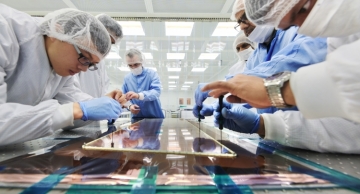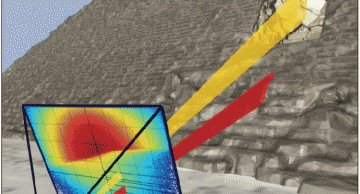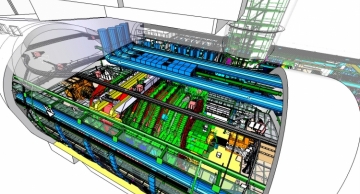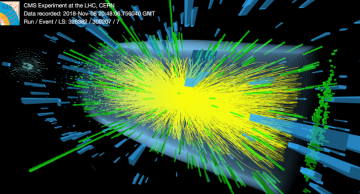Managing the amount of data from the Large Hadron Collider (LHC) collisions is a major challenge for CMS physicists. The detector produces more than 500 terabytes of data per second. Even after sophisticated real-time processing and filtering of the…
News
|
mashah |
Detector
After the LHC was shut down in December 2018 following the successful completion of RUN 2 operation, CMS is undergoing an intensive upgrade and maintenance program during the current two-year break (“Long Shutdown 2” or LS2) in order to ensure an…
|
Anonymous |
Detector
During LS2, CMS will install 144 additional muon detector modules specially designed to detect particles produced in the very forward region.
For the CMS experiment, Long Shutdown 2 (LS2) is like very prolonged open heart surgery. The…
|
Anonymous |
Detector
In February, the CMS and MoEDAL collaborations at CERN signed an agreement to hand over to MoEDAL a section of the LHC beam pipe that was located inside CMS between 2008 and 2013. The delicate object, 6 metres long and made of beryllium, will now be…
|
agiamman |
Detector
Suppose that you need to see what is inside a small room that is difficult to access. Thick walls between you and the object of your investigation; you cannot dig, and the closest that you can get to the target is inside a narrow tunnel, with no…
|
lapka |
Detector
The CMS detector is built from several different layers, surrounding the beam pipe in which the LHC beams collide. The subdetector that is closest to the collisions is the pixel detector. It has a functionality similar to a digital camera taking 40…
|
vormwald |
Detector
After the LHC was shut down at the end of 2018, one might think that physicists working in the large experiments can sit back and relax. On the contrary, CMS will undergo an intensive upgrade and maintenance program during the two-year long…
|
austin |
Detector
A successful four years of CMS detector operation came to an end last week and now we are beginning a new chapter. The next two-years of Long Shutdown (LS2) will mark an important transition for CMS.
Against a background of the intensive 5-…
|
mverweij |
Detector
We are nearing the end of the year and LHC started colliding another species of particles than protons: the nuclei of heavy atoms. These so-called “heavy-ion” collisions are used to study the properties of a particle soup known as the “quark-gluon…
|
plujan |
Detector
When the Large Hadron Collider is in operation, the cavern containing the CMS detector is an extremely inhospitable place, due to the high-energy radiation produced by the collisions. Even after a LHC fill finishes, some residual radioactivity can…
|
lapka |
Detector
The Year-End Technical Stop (YETS) has been especially busy for CMS. In December 2017, part of the new pixel tracker installed in early 2017 was brought to a clean room on the surface at Point 5 to begin consolidation works in preparation…
|
lapka |
Detector
This article was originally published at CERN EP Newsletter.
The CMS Phase-2 Upgrade projects will replace or improve detector systems to provide the necessary physics performance under the challenging conditions of high luminosity at the HL-LHC.…










